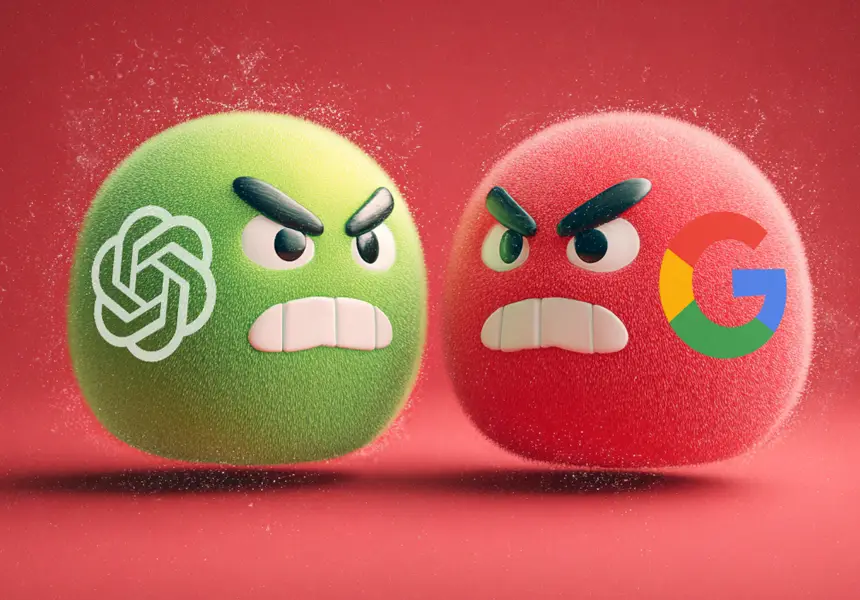Need help getting your website ranked?
Contact Esabi today to request a FREE SEO analysis!

You have likely noticed that fewer people click ten blue links, and more people ask a question and expect a direct, trustworthy answer.
That shift is the heart of Answer Engine Optimisation (AEO).
It complements, not replaces, traditional SEO.
In the modern era, you need both to stay visible across Google Search, AI chat tools, and voice assistants.
This guide explains the difference in plain English, shows where each wins, and gives you a 60 minute checklist you can run with your team today.
Table of Contents

An answer engine is any system that takes a question and returns a direct response rather than a list of links.
Examples include ChatGPT, Perplexity, Microsoft Copilot, and Google Gemini.
Smart speakers and voice assistants also act like answer engines because they speak back a single result.
Some answer engines cite sources, others summarise and keep users in the interface, so you must earn inclusion and attribution.
Google is both a traditional search engine and an answer engine.
Classic results still show links, yet features like Featured Snippets, People Also Ask, AI Overviews, and Knowledge Panels behave like answer results.
That is why AEO and SEO overlap on Google, but they are not the same discipline.

In short, SEO wins the click, AEO wins the mention. So you want both.
You optimise for answer engines by making it simple for machines to find, understand, and quote your best lines.
This structure helps Google, AI summaries, and voice systems extract accurate snippets without guesswork.
No, search behaviour is diversifying, not disappearing.
Classic search engine optimisation still drives high intent traffic for commercial queries and local discovery.
In many sectors, organic search is the most efficient acquisition channel.
What is changing is the mix of surfaces.
You now compete for results pages, AI summaries, and answers on devices with no screen.
Treat AEO as a layer on top of a strong SEO foundation.
Yes, provided you integrate it with AEO and conversion rate optimisation.
Invest in technical health, content depth, link authority, and answer ready formatting.
The brands winning today pair robust SEO with AEO tactics and a focus on measurable outcomes.
If you want a partner who can join the dots, our team of seo experts can help plan, implement, and report on both.
Mix of links and answers.
Focus on SEO fundamentals plus snippet targeting, schema, and user satisfaction signals.
ChatGPT, Perplexity, Copilot, and Gemini.
Focus on concise definitions, authoritative citations, and topical clusters that engines trust as sources.
Focus on short answers, LocalBusiness schema, opening hours, reviews, and NAP consistency.
Aim for 25 to 45 word responses that read aloud cleanly.

Time box one hour. Pick one important page and run this:
Repeat weekly on another high value page. After a month, review snippet wins and AI mentions.
You do not need to choose between Answer Engine Optimisation vs SEO.
You need a plan that uses both to grow visibility and revenue.
As a boutique digital marketing agency with 25 plus years in search, we build holistic strategies that cover technical fixes, content depth, snippet targeting, and answer engine readiness.
If you want to discuss an integrated plan, explore our answer engine optimisation service and our broader professional seo offering, then speak to us about a roadmap that fits your goals.
AEO helps you win the mention, SEO helps you win the click.
Google now behaves like both a search engine and an answer engine, and new tools like ChatGPT, Perplexity, Copilot, and Gemini distribute answers in fresh ways.
Structure your pages for extraction, support claims with citations, and keep your technical and content fundamentals strong.
If you want a partner who can bring it all together, our seo consulting specialists will guide the strategy, do the work, and report in plain English so you can judge us on results.
Contact Esabi today to request a FREE SEO analysis!
We use cookies to improve your experience on our site. By using our site, you consent to cookies.
Manage your cookie preferences below:
Essential cookies enable basic functions and are necessary for the proper function of the website.
Statistics cookies collect information anonymously. This information helps us understand how visitors use our website.
Google Analytics is a powerful tool that tracks and analyzes website traffic for informed marketing decisions.
Service URL: policies.google.com
Marketing cookies are used to follow visitors to websites. The intention is to show ads that are relevant and engaging to the individual user.
Google Maps is a web mapping service providing satellite imagery, real-time navigation, and location-based information.
Service URL: policies.google.com
You can find more information in our Privacy Policy and .